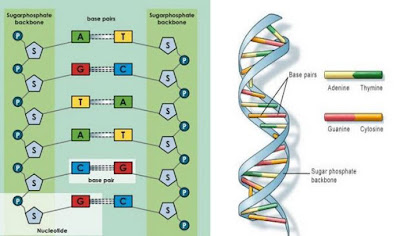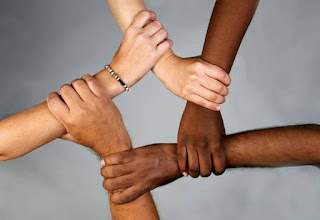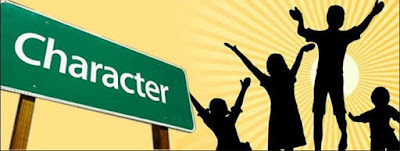MENTORING AND COUNSELING SERVICES, DEFINITIONS, PURPOSES, FUNCTIONS, AND TYPES OF MENTORING AND COUNSELING SERVICES
Understanding Guidance and Counseling Services - Service is a service that has the meaning of helping to prepare (take care of) what one needs; serve, receive (welcome) invitations (challenges, attacks, etc.). Service about or how to serve, serve. While the definition of Guidance is to show, give way, or lead. others toward a goal that is beneficial to his life in the present, and the future.
The guidance is defined as follows: showing the way (showing the way); leading (leading); guide (conducting); give instructions (giving instruction); regulating; directing (governing); give advice (giving advice).
However, this does not mean that all forms of assistance or demands are Guidance. The guidance contained in an institute is a moral Guidance, in which a teacher can motivate his students to be more enthusiastic about learning. Not material. For example, if there are students who have not paid then he came to the teacher and the teacher gave the student money, of course, this assistance is not a form of assistance that is meant with the understanding of Guidance. The term guiding terminology, according to Crow & Crow (1960), quoted by Prayitno and Erman Amti Bimbingan is defined as,. Assistance provided by a person, male or female, who has adequate and well-trained personalities to the individuals every age in helping him organize his own life, developing his own view of life, making his own decisions and carrying his own load.
From the above definition can be concluded that the Guidance is a process of continuous provision of assistance from a mentor who has been prepared to individuals in need in order to develop all the potential possessed optimally by using various media and techniques Guidance in the atmosphere of normative care in order to achieve independence so that individuals benefit both for themselves and for the environment.
Understanding Counseling
Etymologically, the term Counseling is derived from the Latin, ie .consilium. which means .with. or. together. which is strung together. or understand. While in Anglo-Saxon, the term Counseling comes from .sellan. which means submitting. or while conveying .. While dealing with W.S Winkel etymologically Counseling comes from English, Counseling which is associated with the word Counsel, defined as follows: counsel (to obtain counsel); advice (to give counsel); talk (to take counsel).
Counseling in terminology according to Mortensen (1964: 301) quoted H. Mohammad Surya is,. Counseling as an interpersonal process, in which one person is assisted by one other person to improve understanding and skills, find the problem .. Counseling is characterized by a professional relationship between trained counselors and clients. This relationship is usually done individually, although it sometimes involves more than two people. It is designed to help clients understand and clarify their views on the scope of life and to learn to achieve its goals.
Who quotes from Pepinsky and Pepinsky (1954), Counseling is an interactional process: (a). occurs between two individuals who are called counselors and clients, (b). occurs in a personal (professional) situation, (c). created and nurtured as one way to facilitate the occurrence of changes in client behavior, so he obtained a decision that satisfies his needs.
If viewed from the opinions of experts described above, appear to complement each other. So from the above explanation can be concluded that Counseling is a process of assistance provided by the counselor to the client so that clients can understand and direct his life in accordance with its purpose.
Read more:
Application of Character Education
Counseling Guidance Relationships
The word Guidance and Counseling is a word that can not be separated because it is interrelated, but there is also the opinion that Guidance and Counseling is a different word. According to Hallen, the term Guidance is always coupled with the term Counseling. This is because Guidance and Counseling is an integral activity. Counseling is one of the techniques in the Guidance service among several other techniques.
While the Guidance is wider, and Counseling is the most important tool for service business Guidance. The same opinion is also explained by Nana Syaodih Sukmadinata explaining that, Counseling is one of service technique in Guidance, but because of its very important role, Counseling Aligned with Guidance. Counseling is a therapeutic Guidance technique because the target is not a change of behavior, but the more fundamental thing, that is an attitude change. Thus indeed Counseling is an attempt to change one's lifestyle. To change one's lifestyle cannot be only with informative guidance techniques, but it needs therapeutic or healing techniques.
While the opinion that between Guidance and Counseling are two different understandings, because Counseling is more identical with psychotherapy, which is an attempt to help and work on individuals who experience difficulty and serious psychological disorders. While the Guidance by this view is considered synonymous with education.
From the above information can be concluded that between Guidance and Counseling has a close relationship in which between the two complement each other in helping clients or others in solving a problem and change one's lifestyle. Changing the wrong lifestyle becomes true, the negative lifestyle becomes positive. So the client can direct the life according to its purpose. Because the task of a counselor or counselor is to provide good direction to the guided.
Goals and Functions of Guidance and Counseling
1. Goal Guidance and Counseling
In an activity be it formal or nonformal there will be a purpose. So also with Guidance and Counseling. The purpose of Guidance and Counseling are: According to Tohirin, the purpose of Guidance and Counseling is: to gain a better understanding of the client's self, directing the client in accordance with its potential, able to solve their own problems faced by the client, can adjust themselves more effectively both against himself and his environment to gain happiness in his life.
The purpose of Guidance and Counseling by Hallen is:
a. Guidance in order to find a person meant that learners recognize their own strengths and weaknesses.
b. Guidance, in order to recognize the environment, is intended for participants to know the environment objectively, both social and economic.
c. Guidance, in order to plan for the future, is intended so that learners can consider and make decisions about their future, whether education, career or cultural field, family and society.
Guidance and Counseling has a purpose that consists of general goals and special goals.
Common Goals Guidance and Counseling helps individuals to achieve optimum development according to their talents, abilities, interests, and values, as well as fragmentation of problems faced by the individual (client). Including general purpose Guidance and Counseling is to help the individual to be independent with the characteristics of being able to understand and accept himself and his environment, make realistic decisions and plans, direct himself with his decisions and plans and ultimately manifest himself.
The specific objectives of Counseling and Counseling are directly related to the client's developmental direction and the problems at hand. The special purpose is an elaboration of general goals that are linked to the problems of the client, both concerning development and life.
From the opinion of experts, it is clear that the purpose of Guidance and Counseling all leads to learners so that learners better understand themselves both from the shortcomings and the advantages. And also, help learners to dare to take their own good decisions (according to talents, abilities, and interests) for himself.
2. Guidance and Counseling Function
Guidance and Counseling function according to Syamsu Yusuf and A.Juntika Nurihsan are:
a. Understanding, which helps learners to have an understanding of himself (potential) and the environment (education, work, and religious norms).
b. Preventive (prevention), the counselor's effort to always anticipate the various problems that may occur and trying to prevent it, so as not experienced by learners.
c. Development, the counselor always strives to create a conducive learning environment.
d. Improvement (healing), which is a Curative Guidance function. This function is closely related to providing assistance to students who have experienced problems.
e.Channeling, the Guidance function in helping individuals choose extracurricular activities, majors that match the interests, talents of students.
f. Adjustment, which is a Guidance function in helping individuals (students) to adapt dynamically and constructively to educational programs, school rules, or religious norms.
From the above explanation can be concluded that the function of Guidance and Counseling in addition as an understanding for himself (learners) and the environment, the function of Guidance and Counseling as well as a healer (improvement) for learners who have difficulty when getting a problem that is difficult to solve which causes learners to be pessimistic and inferior.
Principles of Guidance and Counseling
In providing tutoring teachers should consider some of the principles of them are:
The principles of Guidance and Counseling are:
a. Tutoring is given to all students. All students are either smart, fair, or poor.
b. Before giving help, the teacher must first try to understand the difficulties faced by the students.
c. Tutoring provided by the teacher should be tailored to the problems and factors that lie behind it.
d. Tutoring should use varied techniques.
e. In providing tutoring, teachers should work with other school staff.
While in Kartini Kartono's book, the principle of Guidance and Counseling is that everyone is valuable, an important principle, learners also have the potential and right to gain success in their lives.
He should be helped so that his potential becomes a reality. The opinions of Kartini and Kartono are also similar to M. Arifin's opinion which explains that every individual has nature (basic ability) that can develop well when given the opportunity. For that through good Guidance.
From the above opinion, the author agrees with the opinion of Kartini Kartono, who explains that everyone is valuable, in the presence of such principles, then learners feel that they are valued by others. So that learners will be more excited (optimistic) in facing problems both at school and outside a school. In addition, the learner will also assume that he is not discriminated from other students because he has the opinion that he has advantages over others.
Guidance and Counseling Techniques
In general, the techniques used in Guidance take two approaches, namely group approach and individual counseling.
1. Group guidance
Techniques used in helping students or groups of students solve problems through group activities. Some special forms of techniques Group guidance are homeroom program, field trip, group discussion, group activities, student organization, sociodrama.
2. Individual Counseling
In this technique, the provision of assistance is done with a relationship that is face to face relationship (a relationship of four eyes), which is carried out by an interview between counselor with counsel. Problems solved through this counseling technique are personal issues.
Some of the guidance and counseling approach, namely:
1. Directive Approach.
2. Non-Directive Approach.
Briefly, both approach Guidance and Counseling can be explained as follows:
1. Directive Approach.
This approach is also known as Counselor-Centered Guidance. This trait indicates that the counselor plays a major role in the interaction process of Guidance services. The advisor is trying to find and find problems experienced by his client.
2. Non-Directive Approach
This approach is also known as a Client-Centered Guidance service. Nature shows that the guided party is given a major role in the field of interaction of Guidance services. Characteristics of non-directive relationships:
a. This non-directive relationship puts the client in a central position, the active client to disclose and solve problems.
b. Counselors act only as drivers and creators of situations that enable clients to grow on their own.
Types of Counseling and Counseling Services
The services provided by School Guidance can be grouped as follows:
a. Student Data Collection Services
b. Illumination Service
c. Placement Services
d. Teaching Service
e. Extension services
f. Research and Assessment Service (evaluation)
g. Public Relations Services.
Brief types of guidance and counseling services can be explained as follows:
a. Student Data Collection Services
In accordance with the notion that Guidance is an aid to an individual facing a problem, it is certain that success or failure of a relief effort in the course of the Guidance will depend on much of the information or information about the individual. Therefore collecting such data is the first step in the overall Guidance activity.
b. Illumination Service
What is meant by this ministry is to provide a clear and complete explanation of the details of each student's needs, whether on education, work, social, or personal?
c. Placement Services
The essence of this placement service is to help the individual gain adjustment by putting himself in the right position. The purpose of this placement service is for each individual to be in an appropriate position of his or her situation, such as interests, skills, talents, ideas, level of development and so on.
d. Teaching Service
What is meant by the teaching service is the activity of providing assistance to the students in overcoming the difficulty of difficulty in teaching. The goal is for each student to get a good adjustment and develop his ability optimally in teaching activities.
e. Extension services
Counseling is the core of Guidance program activities. This extension activity in addition to functioning as a therapy (healer), can also serve as a way of collecting data. Counseling is a professional activity, meaning it is done by people who have education and expertise and special experience in the field of counseling.
f. Research and Assessment Service (evaluation)
The purpose of this service is to conduct research and assessment on issues related to Guidance and Counseling program activities. A good Guidance program always bases itself on the results of research and assessment.
g. Public Relations Services.
In addition to providing services to students and other school personnel, Guidance activities provide services also to parties outside the school, the community. The purpose of this service is to work closely with various parties in the community in solving problems related to students' problems, such as child mischief, truancy, lethargy, drop-out and so on.




















